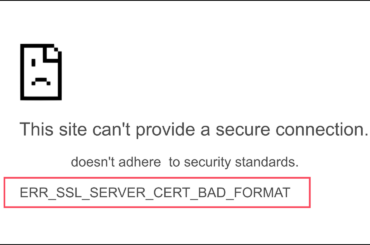SSL certificates are used to secure online communications, authenticate a website’s identity and make them more secure. Your website will become vulnerable to attacks like man-in-the-middle attacks if you do not secure it with an SSL certificate. So it is important to get an SSL certificate for your website from trusted certificate authorities like Sectigo to keep your website and your website visitors’ data secure. Likewise, it is equally important to keep track of your certificate’s expiry date and renew it at the right time. You also must keep track of errors and make sure the certificate works well.
Though it is crucial to make sure your website always has an SSL certificate, there are certain circumstances where you will need to remove the certificate. If your certificate is stolen or compromised, you will have to remove it. Removing an SSL certificate involves a few different steps and you cannot uninstall it with just the click of a button.
If you are looking to remove an SSL certificate from Windows 10, this article is for you. Read on to learn how to remove SSL certificates from Windows 10.
Note: Remember to back up your certificate before you remove it. You could run into unexpected errors if there are any modifications to root and intermediate certificates.
Steps to Remove Your SSL Certificate From Windows 10
- Click the Windows icon and search for MMC to launch the Microsoft Management Console (MMC).
- Click on the File button in the MMC at the top left corner and click on Add/Remove Snap-in.
- In the left column, click on Certificates and hit Add to move it to the right column.
- Select OK to move on to the next steps.
- Click on the Computer account from the Certificates Snap-in window to view certificates for all users on this device.
- Hit Next and click on Local computer on the next window.
- To close the snap-in manager screen, click on Finish and then OK.
- You will now see a list of certificates on your device in the left column of MMC.
- The next step is to locate the certificate you wish to remove using the folder list on the left. Open the Third-Party Root Certification Authorities folder and click on Certificates.
- Locate and right-click on the certificate you wish to remove.
- Click on Properties and then in the General tab, click on Disable all purposes for this certificate in the Certificate purposes section. Hit Apply and restart your server to complete the removal process.
Whenever you remove an SSL certificate from Windows 10, you will need to know what files must be disabled, as deleting the wrong intermediate certificate or root could result in errors. You can follow the steps mentioned above to remove SSL certificates from Windows 10 if you have not deployed a large number of certificates. However, it is wise to go for SSL management tools and automate the process if you are dealing with multiple SSL certificates.





